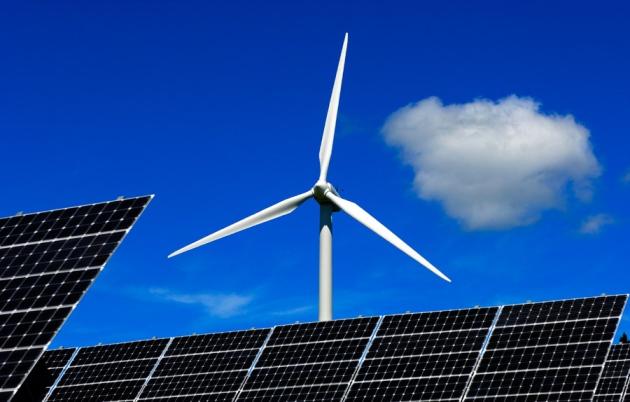Someday, you may store your solar or wind power in a ‘rhubarb battery’ from Harvard
The intermittency of solar and wind energy is leading grid operators to look for better ways of storing energy.
One of the biggest problems with renewable energy, like solar or wind power, is that it comes and goes. That's why a team at Harvard is excited about its rhubarb battery.
One of the greatest technical problems facing the development of renewable sources is storing the collected energy for later use. If your home or business is solar-powered, come the evening you have to buy electricity or use very expensive batteries to keep the lights on. Utilities with large-scale solar and wind farms have the same problem managing these intermittent power sources. And much of the power from the always-on nuclear and coal plants goes to waste at night because demand is low and it’s too expensive to store the energy.
Michael Aziz and his research team at Harvard’s School of Engineering and Applied Sciences have developed what’s called an organic mega-flow battery, which has the potential to solve this problem.
The organic mega flow battery has two components: the energy source ("organic" substances) and the storage system (a "flow" battery.)
“The flow battery is different from a traditional solid electrode battery,” Aziz explains, “because it stores the energy outside the battery container itself in storage tanks full of fluids. When you want electricity, you flow [the fluids] into the cell past the electrodes, where they’re converted … and they give off the energy in the form of electricity.”
One nice thing about a flow battery is that it can potentially be any size. The energy is stored in tanks separate from where the electrodes come together, so the amount of energy storage is limited only by the size of the tanks. "That’s potentially a much cheaper way of storing large amounts of energy than stacking up entire banks of solid electrode batteries," says Aziz.
Now, the most commercially-advanced flow battery stores energy using Vanadium, a rare and expensive metal. Aziz’s team has replaced this metal with a class of organic molecules called quinones. “There’s a quinone in rhubarb,” Aziz explains, “that is so, so close to the molecules that we actually have … that some people are calling [our battery] a rhubarb battery.”
In fact, Aziz says his team's inspiration came from how plants store energy from the Sun. They use quinones, which are abundant in plants.
"When [the quinones] are in chlorophyll during photosynthesis, they switch back and forth between oxidized and reduced forms over and over again without any sign of degradation, and that’s exactly the functionality we want in a battery," he says. That change releases energy.
"So we modified them to make them highly soluble in water, and put them in a flow battery, and it works. Performance is terrific. After half a year at this, the performance is rivaling that of Vanadium."
One nice thing is that you don't use up the quinones — you flow the changed molecule back through the battery, adding solar or wind energy, and the battery is recharged.
Right now, the team extracts quinone molecules from crude oil because the method is cheap. “Ultimately,” Aziz says, “if we can get [quinones] out of rhubarb, that would be an extra bonus.”
The first step, though, is to improve performance. “We haven’t had a chance to optimize anything yet,” he says, “so we think that we have a lot of room for improvement ahead of us. We need a battery that can safely and cost effectively store large amounts of electric energy and this has a fighting change of being able to do that.”
If all goes well with the rhubarb battery, Aziz thinks two tanks in your basement — together the size of a tank that stores home heating oil now — would be enough to capture all the electricity you would need from solar panels on the roof.
The story you just read is accessible and free to all because thousands of listeners and readers contribute to our nonprofit newsroom. We go deep to bring you the human-centered international reporting that you know you can trust. To do this work and to do it well, we rely on the support of our listeners. If you appreciated our coverage this year, if there was a story that made you pause or a song that moved you, would you consider making a gift to sustain our work through 2024 and beyond?
